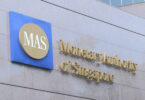During a panel at the SIBOS banking event today, Mu Changchun said that the mBridge cross border CBDC payment system could connect to traditional payments systems, including real time gross settlement systems (RTGS) and faster payment systems. “We are looking forward to possible cooperation with Swift in the future,” said Mr Mu, who leads the Digital Currency Institute of the People’s Bank of China.
mBridge uses distributed ledger technology (DLT) and wholesale central bank digital currency (wCBDC) to enable direct cross border payments, without using Swift or correspondent banks. Participants include the central banks of China, Hong Kong, Saudi Arabia, Thailand and the UAE, as well as the BIS Innovation Hub and numerous commercial banks. The initiative reached the minimum viable product (MVP) stage in June. By removing correspondent banks as intermediaries, payments are faster and cheaper.
Today it was revealed that mBridge is also being used for FX payment versus payment (PvP).
The possible connection between Swift and mBridge is noteworthy given that mBridge is a potential Swift competitor. SIBOS is Swift’s annual event, so Swift deserves credit for providing a public platform for mBridge. A collaboration between the two could be mutually beneficial. For Swift, its future role might evolve into being an integrator, as its recent CBDC interoperability and DLT trials have demonstrated. From mBridge’s perspective, it could expand the payment options available.
Former People’s Bank of China (PBoC) Governor, Zhou Xiaochuan, also spoke at SIBOS, noting that some view China’s CIPS and mBridge as substitutes for Visa and Swift, but this is not his view. However, he expressed a hope that Swift could have ‘better’ governance noting that Swift’s governance was apolitical until the 9/11 attacks.
mBridge and the dollar
While mBridge has been touted as promoting local currency usage, Governor Zhou said he believes that mBridge will have little impact on dollar usage. “In my mind, I think mBridge does not exclude the use of the dollar, yet,” he said.
However, he believes the dollar’s status as reserve currency is up to the U.S. government. “If the U.S. government would like to use the U.S. dollar as a sanction tool, it may reduce the feasibility of other countries to use the U.S. dollar,” he said. He added that liquidity, particularly the availability of currency swaps, is also important for a reserve currency.
mBridge’s application sweet spots
PBoC Deputy Governor Lu Lei spoke about some of the mBridge applications. One is the usage of mBridge for FX payment versus payment (PvP) settlement.
The BIS and CPMI have frequently highlighted the ongoing risks in foreign exchange (FX) settlement. CLS, the FX central counterparty, only provides settlement in 18 currencies. Every day trillions of dollars in FX transactions are subject to settlement risks. The exposure in Hong Kong and Singapore is larger than the entire capital of all commercial banks combined. Hence, the use of mBridge could address some of these risks by enabling instant atomic settlement of the currencies exchanged using PvP.
Governor Lu also highlighted that banks currently poorly serves remittances and cross border ecommerce transactions. They have small values, are complex, have high KYC costs and limited profitability, which is why fees are so high. mBridge could help to address these issues.
Li Shu Pui of the Central Bank of the UAE sees three opportunity areas for mBridge. First, are the ones already mentioned for transaction banking – the combination of fast cross border payments and FX PvP settlement. Secondly, he noted the trend of connecting domestic payment systems internationally and cross border card transactions. Currently, for the settlement between banks these often use deferred settlement, whereas mBridge could help with instant settlement. Thirdly, tokenization and the market for tokenized assets will expand. Hence, mBridge could be used to settle cross border transactions in the future.
Mr Li gave an update on mBridge’s progress. He said there have been a few hundred transactions so far, representing the equivalent of a few billion dollars. His UAE colleagues estimated that last month’s transactions increased by around 35%.
Progressing mBridge’s technology
Turning to technology, the mBridge ledger is decentralized, with central banks and commercial banks operating their own nodes, databases, and key paris. According to PBoC’s Mr Mu, who leads the technical sub committee, each bank has autonomy over its own system. Central banks participate in the blockchain consensus, but commercial banks do not.
One challenge encountered is unstable network conditions. The consensus mechanism was upgraded this year to help, increasing the efficiency by 30%. Mr Mu said this involved weak certificates (we may have misheard and hope to clarify).
On the privacy front, currently mBridge relies on a randomly generated method for pseudonymous identifiers. However, they are working on a zero knowledge proof solution (ZKP), which should hide (rather than obfuscate) information. The target is to launch this in 2025.
While part of the system is based on Ethereum, some of the technology was developed in China, including the novel consensus mechanism. The BIS is in the process of hiring vendors for third party code reviews and open source assessments. The aim is to fully open source the code in the future, but for now all the central banks have access to the source code.
Implementation challenges to so far
Meanwhile, Alisara Mahasandana from the Bank of Thailand outlined a few challenges encountered by the commercial banks during the early pilot phase.
Banks have to pre-fund mBridge payments, whereas traditionally they relied on correspondent banks for this. Plus the banks need to manage the liquidity of both fiat currency and the CBDC.
In terms of FX, there is no wholesale FX market for CBDC. So banks have to do the trade in fiat currency and then use it for the conversion of CBDC.
Regarding regulation, the banks had to introduce additional processes to adhere to the AML and CFTC requirements for each counterparty jurisdiction.
Some of the commercial banks involved also shared their views. We may add their perspectives later.






